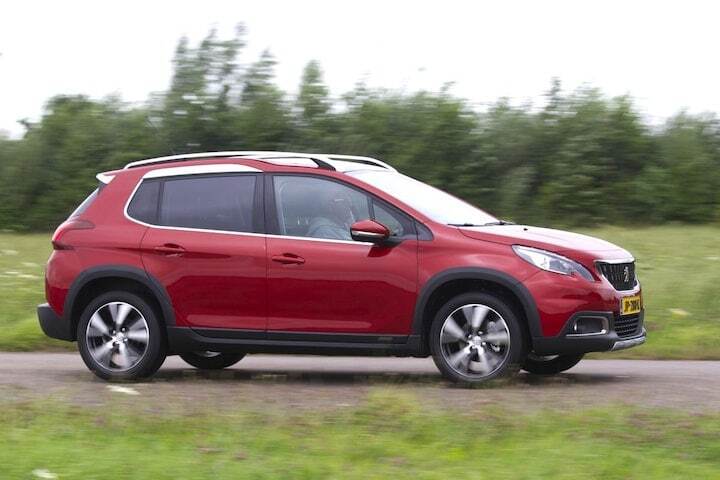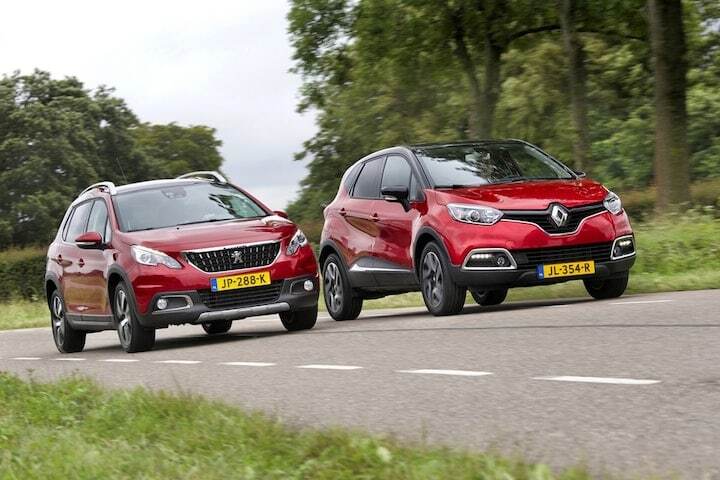
The Peugeot 2008 made its debut in 2013 as one of the first B-segment crossovers on the market. It immediately joined a new and growing segment, where it competed with the Renault Captur, among others. In the years that followed, the 2008 became a fixture on Dutch roads.
Is the Peugeot 2008 A94 a good choice?
Compact on the outside and as spacious as possible on the inside: with these characteristics, B-segment crossovers have rapidly become popular in recent years. The Peugeot 2008 is therefore a practical choice. Its higher body provides the necessary interior space, while its compact exterior dimensions still allow you to easily maneuver through busy traffic.
The Peugeot 2008 distinguishes itself in the B-segment with an originally designed interior. The design stands out due to special details, such as the beautifully shaped handbrake and the subtle blue ambient lighting that runs along the rooflines and the instrument panel. As for the materials used, Peugeot sets the bar higher than many other models in its class, making it feel more premium inside.
An important feature of the 2008 is the i-Cockpit. This concept combines a relatively small steering wheel and a higher placed instrument panel. The intention is that you read the gauges over the steering wheel. In practice, the experience varies: some drivers appreciate the clear view, while others indicate that the steering wheel is exactly in front of the gauges. Pay extra attention to this when taking a test drive.
In 2016, the Peugeot 2008 received a facelift. The appearance was revamped and the facelifted 2008 received, among other things, a new grille and bumper. The front and rear bumpers were also connected with a black border, which runs over the wheel arch edges. This gives it a tougher appearance.
The range of versions was also adjusted. For example, the Urban Cross disappeared, but the richly equipped GT-Line was introduced. Depending on the chosen version, the 2008 can be equipped with features such as automatic climate control, leather upholstery with seat heating, a panoramic roof, light and rain sensors, navigation with DAB+ radio and alloy wheels. This way you can always find a Peugeot 2008 that suits your needs.
Performance
Peugeot delivered the first generation 2008 with both petrol and diesel engines. In the petrol area you can choose from the 1.2 PureTech three-cylinders with 82, 110 or 130 hp. In addition, there was initially the 120 hp 1.6 VTi, but this disappeared from the range in 2015.
Those who want to diesel can step into the 92 or 115 hp e-HDi or the 100 or 120 hp 1.6 BlueHDi. From the facelift onwards, all versions except the 1.6 BlueHDi with 120 hp were removed from the price list. A 100 hp 1.5 BlueHDi took its place.
Space and practical usability
The Peugeot 2008 offers a pleasant seating position at the front with sufficient head and legroom for the driver and passenger. In the back, the legroom is more limited, as we are used to in the B-segment. Passengers in the back seat will notice that the space is not abundant, especially on longer journeys, especially when the front seats are placed far back. Those who opt for a model with a panoramic roof should also take into account slightly less headroom in the rear.
The luggage space of the 2008 is neat with 350 liters for a compact crossover. If you fold down the rear seat, the available loading space grows to a maximum of 1,194 liters. As a result, despite its compact exterior dimensions, you can perfectly use the 2008 for larger jobs or a weekend away where more luggage is needed.
Reliability and problems
In the area of reliability, there are some points of attention to mention with the Peugeot 2008. In particular, the 1.2 PureTech engines are known for increased oil consumption and possible problems with the timing belt. The belt runs through the oil in these engines, causing it to wear prematurely. This is especially possible if you don’t change the oil on time. If the timing belt wears, fragments can end up in the oil channels of the engine block. This results in engine damage.
In addition, the infotainment system can start up slowly or not respond, which you can experience as annoying during use. So pay attention to this when taking a test drive and when checking the maintenance history of the car.
